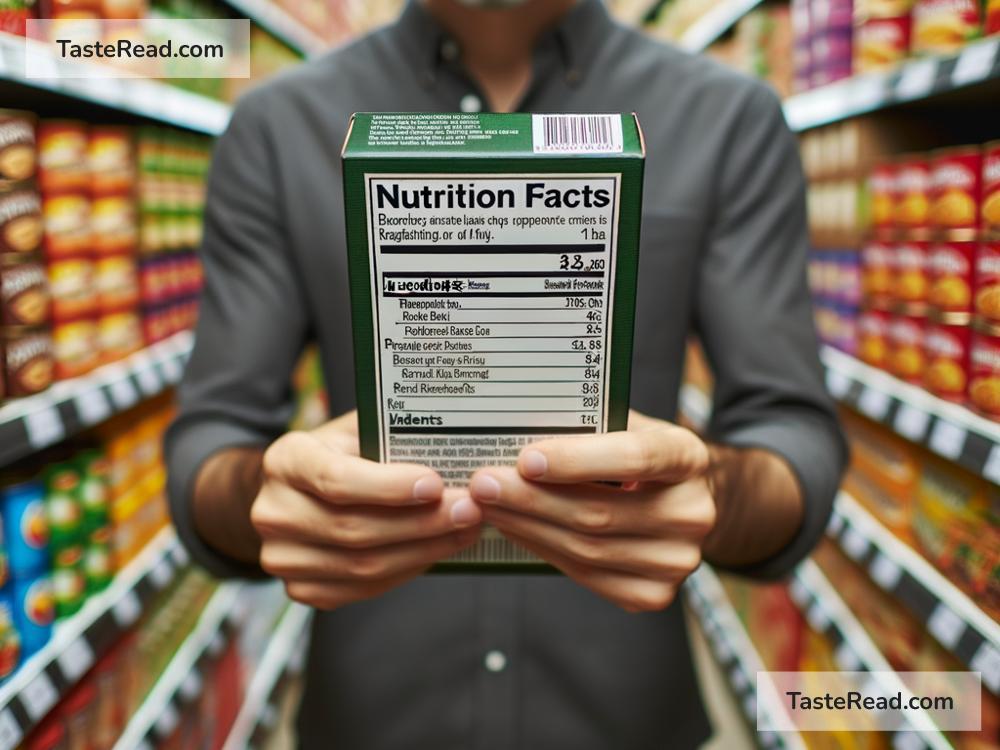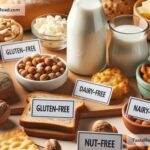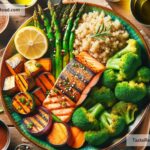Understanding Food Labels: What to Look For
When you walk into a grocery store, the shelves are packed with colorful food packages. These packages often have labels full of information, but it can be tricky to understand what they mean. Food labels are important because they help you decide what’s best for your health. Knowing how to read and interpret them can make shopping easier and healthier. In this article, we’ll break down the basics of food labels and highlight what to look for in simple terms.
Why Food Labels Matter
Food labels tell you what’s inside the product and provide details about the nutrients, calories, and ingredients. By reading food labels, you can make smarter choices for your diet and avoid things like hidden sugars, unhealthy fats, or allergens. Whether you’re trying to eat healthier, manage your weight, or avoid certain ingredients, understanding food labels is key.
Key Parts of a Food Label
Food labels typically include several sections. Here’s what you’ll find:
-
Nutrition Facts: This box on the label lists detailed information about the product’s nutrients. Common nutrients include protein, fiber, fat, sugar, and sodium.
-
Serving Size: This tells you how much of the product counts as one “serving.” All nutrients in the Nutrition Facts box are based on this serving size.
-
Calories: Located at the top of the Nutrition Facts box, calories tell you how much energy the food provides.
-
Ingredients List: This section lists all the ingredients in the product, starting with the ones present in the largest amounts.
-
Allergen Information: Many labels highlight common allergens like peanuts, milk, and gluten.
What to Look For on Food Labels
Not all food labels are created equal. Some products can seem healthy on the outside but may contain hidden ingredients that aren’t good for you. Here are key things to look for when reading food labels:
1. Check the Serving Size
Serving sizes can be tricky. If the package says one serving is half the product but you eat the whole thing, you’re actually consuming twice the nutrients listed. Pay close attention to serving sizes to avoid accidentally eating more calories, sugar, or sodium than you intended.
2. Know Your Calories
Calories measure the energy in food. Everyone’s calorie needs are different based on age, activity level, and health goals. If you’re watching your weight, check the calories per serving and compare them to your daily needs.
3. Focus on Key Nutrients
Some nutrients should be eaten in larger amounts, while others should be limited. Here’s a simple guide:
- Increase These: Fiber, protein, vitamins, and minerals (like iron and calcium) are excellent for health. Choose foods with higher amounts of these nutrients.
- Limit These: Saturated fats, trans fats, sodium, and added sugars can contribute to health problems like heart disease and high blood pressure. Look for lower numbers for these nutrients.
4. Understand Sugars
Added sugars are often hidden in packaged foods. Read the label to find out how much sugar is in the product. Ingredients like “high fructose corn syrup” or “sugar” in the ingredients list indicate added sugars. The less sugar, the better for your health.
5. Read the Ingredients List
The ingredients list can tell you a lot about the product. Ingredients are listed in order of quantity, from highest to lowest. If you see sugar or processed ingredients listed first, it’s a clue that the food might not be very healthy. Look for whole, natural ingredients like nuts, fruits, or whole grains.
6. Look for Healthy Fats
Not all fats are bad. Healthy fats like those found in nuts, seeds, and olive oil can be good for you. However, limit foods high in trans fats or saturated fats. You can find these in fried snacks, baked goods, and processed foods.
7. Check for Sodium
Sodium (salt) is used to flavor and preserve food, but too much of it can lead to health problems like high blood pressure. Aim for foods with lower sodium levels, especially if you’re eating processed or canned products.
8. Avoid “Health Buzzwords” Without Proof
Many products use labels like “organic,” “natural,” “low-fat,” or “gluten-free” to attract shoppers, but these words don’t always mean the product is truly healthy. For example, a package may say “low-fat,” but it could be packed with sugar instead. Always double-check the ingredients list and nutrition facts to be sure.
Tips for Healthy Choices
- Shop Smart: Compare similar products by checking their food labels side by side. Choose the one with less sugar, sodium, and unhealthy fats but more protein and fiber.
- Don’t Skip Fresh Foods: Fresh fruits, vegetables, and whole foods often don’t have labels because they are naturally healthy. Focus on these when you’re grocery shopping.
- Understand Average Daily Values (DV): DVs on labels tell you the percent of each nutrient based on a 2,000-calorie diet. Use these values as a guide but know that your needs may vary.
Conclusion
Food labels don’t need to be confusing. By knowing what to look for, you can make smarter choices and improve your health one meal at a time. Start by checking the serving size, calories, sugar, and ingredients list. Remember to focus on nutrients you want more of, like fiber and protein, and avoid the ones you should limit, like added sugars and sodium. With practice, reading food labels will become second nature, and your shopping trips will be much easier. Healthy eating starts with knowing what’s in your food!


